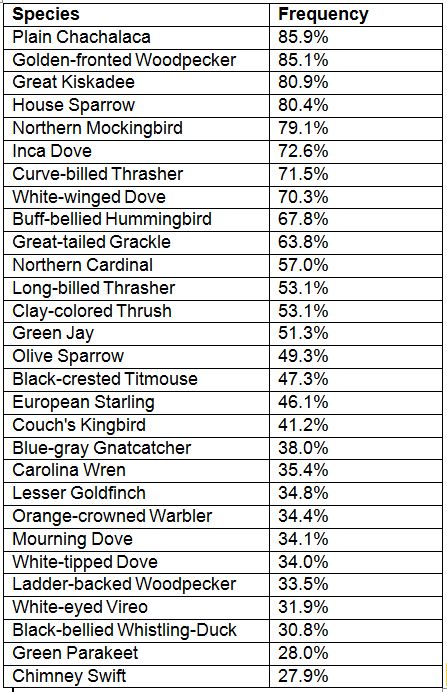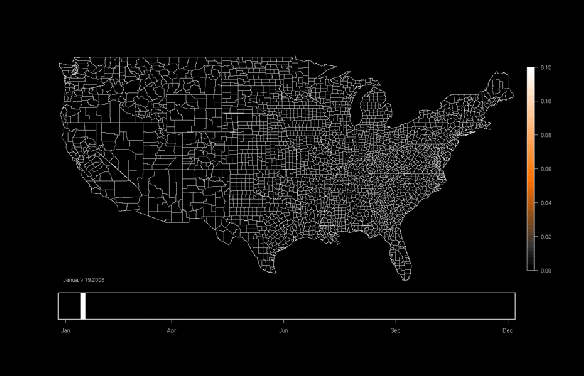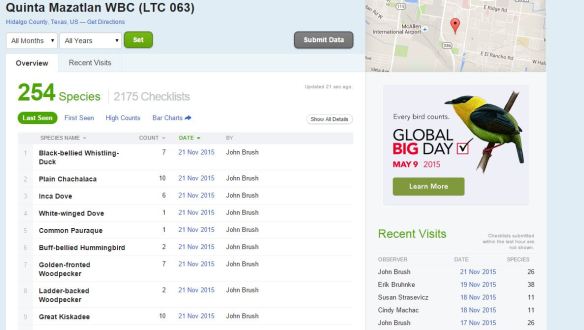As we begin the new year (and may 2016 be a safe and productive one for all of you!), I like to go back and look at what happened in the birding world here at Quinta Mazatlan. It’s a good opportunity to also look back even further than 2015 as well.
I decided to look at the eBird records from the Quinta Mazatlan Hotspot (linked). I downloaded the eBird bar chart data for each year Quinta Mazatlan has been open (2006-2015) and compared the number of species reported and number of checklists submitted. The idea being to explore a little bit more of how the birding at Quinta Mazatlan has changed over the years, without delving into individual species.

This graph shows the number of species reported each year from 2006-2015 (blue line), along with the corresponding number of checklists submitted (red line). The number of checklists dramatically increased between 2011 and 2012, and maintained at the new high level through 2015.
While it doesn’t look like it, the number of species increases noticeably between 2006-2011 and 2012-2015. When running a regression between the number of complete checklists per year and the reported species total you can see this trend much easier.

Regression of number of species with number of checklists. There was a significant (p < 0.005) positive relationship between the two, and a pretty nice fit of line (R² = 0.8707, y = 0.2209x + 115.05). For example, if we submitted 200 checklists in a year, based off the equation we would expect to see roughly 160 species.
The most frequently birded time of year is the winter, and the least frequently birded is the summer (based off the number of checklists submitted). November and February in particular are well birded. I would venture that in November it is due to the Rio Grande Valley Birding Festival but I’m unsure of why February has so many checklists. The dip in amount of checklists in the summer is typical across the Valley; fewer visiting birders that time of year!
I wanted to figure out how many bird species a birder would typically see on a visit to Quinta Mazatlan. To do this, I chose a somewhat arbitrary limit of birds having a frequency of at least 25% (meaning that they are reported on 1/4 checklists at Quinta Mazatlan). 29 birds met this limitation, and are seen in the table below.

Species recorded on over 25% of checklists submitted for Quinta Mazatlan. These are the core species a visitor would expect to see in the park, along with many others that are more uncommon and/or seasonal.
I also thought it would be fun to select a “best bird of the year” for 2015, based primarily on how rare the species is both in the Lower Rio Grande Valley and specifically at Quinta Mazatlan. So, without further ado, the best bird of the year was…..
… Yellow-green Vireo! This bird was found by Erik Bruhnke, one of Quinta Mazatlan’s great bird guides. It was seen singing in July. This species is a code 3 American Birding Association bird (scale of 1-5, with 5 rarest), which is defined as a “species that occur in very low numbers, but annually, in the ABA Checklist Area. This includes visitors and rare breeding residents.” The ABA area is essentially the continental US and Canada.
There were only 5 records of Yellow-green Vireo in the Valley in 2015, and it had never been recorded at Quinta Mazatlan before. Great find Erik!
Here’s to 2016 – may it have lots of birds in store!













